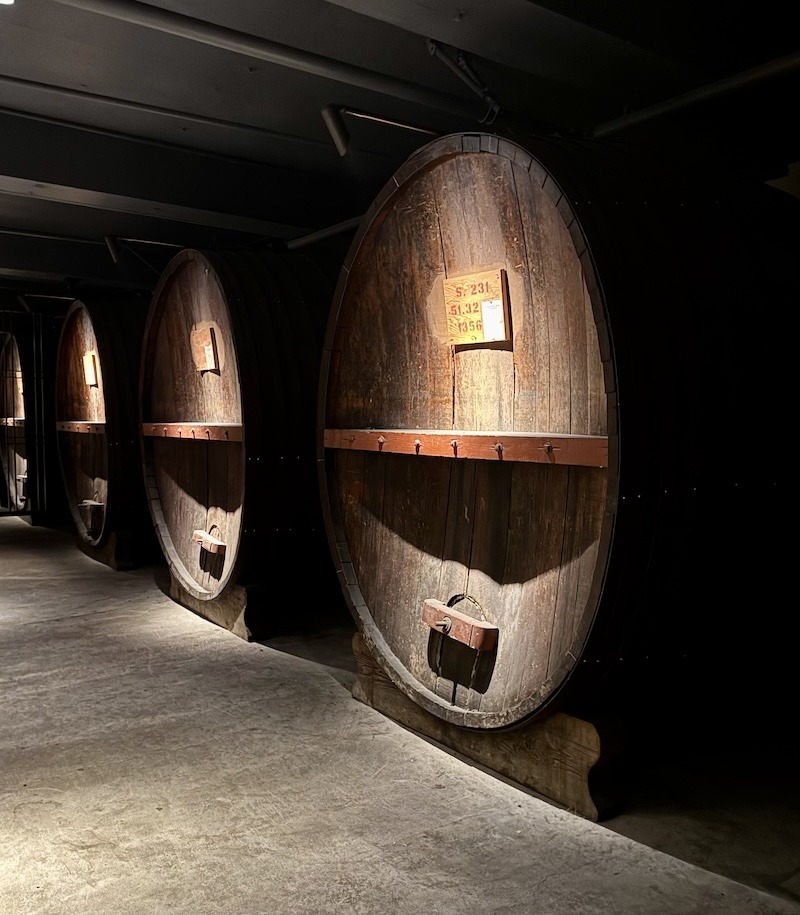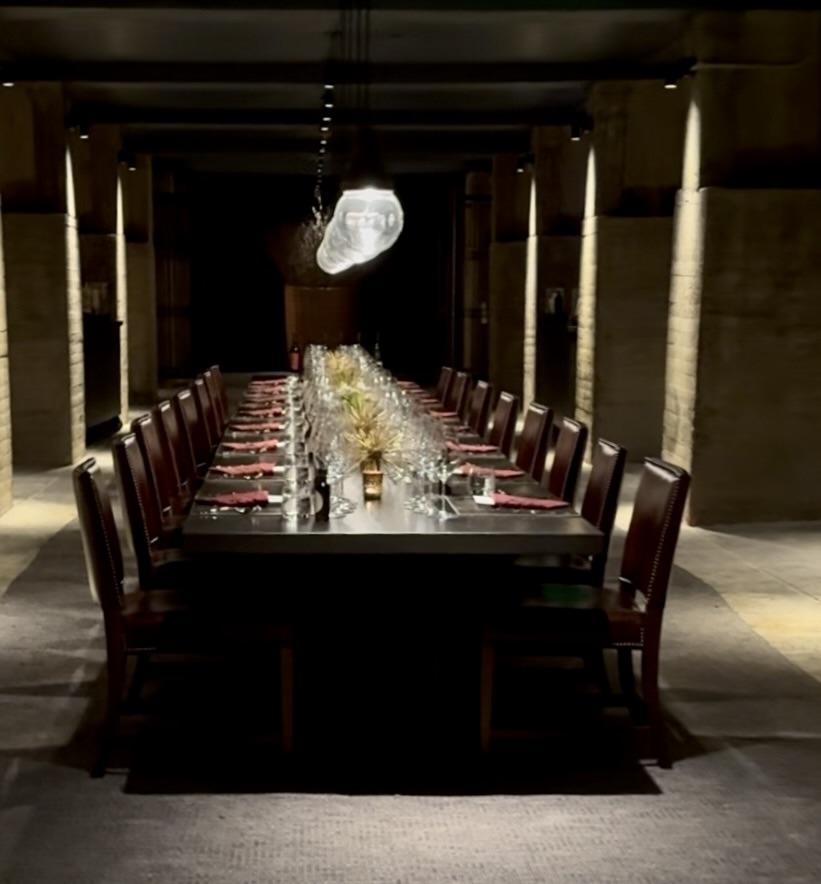My dad and grandfather were both history professors. When I was growing up, if I asked a simple history question I would get a dissertation. Because, as I was told, “you need to know the context to fully understand”. As annoying as it was, I find myself doing the same thing with my kids, and in my writing. It’s actually one of the reasons I focused in on studying the American wine region and earning my American Wine Expert Certification. When it comes to historic wineries, knowing their stories can change the way you understand and view history, a wine region, as well as how you taste their wine.
As my kids would tell me, “it’s not really that deep, mom”. But yes, it really is.
While on my last visit to Napa Valley I only had the chance to visit a handful of wineries, each with its own colorful history. Something I picked up on from these visits and chatting with a few locals is that many wineries who forgot their roots, or maybe didn’t forget but rather stopped sharing, thinking the wine was the story, not them, are starting to get back to their roots. It’s easy to forget your past, heck some of us drink a few glasses of wine to help the process along. But, as a past marketing executive, owning your roots and sharing your story in a world of wine shops with bottles that blend together, is one way to stand out.
I’ve put together a list of historic wineries in the United States to visit and specifically in Napa Valley. As part of this venture, I’ll be profiling as many as I can to help explain a little history through wine…while helping you see past the sea of wine bottles to find those gems on the shelf.
Let’s start with Louis M Martini Winery
Louis M Martini Winery has deep roots in Napa Valley, just about 100 years to be exact.
Known for its iconic Cabernet Sauvignon Louis M. Martini and his family have shaped not only how wine is grown but its production, as well as the bottling, labeling and marketing of single varietals. Not to mention helping to establish Cabernet Sauvignon as the King of Napa, and moving Americans from sweet to dry wines. What the Martini family has accomplished in the last 90+ vintages might seem mundane in today’s world of wine but it was revolutionary at the time and shaped today’s wine industry. It’s one of Napa Valley’s wine legacy stories worth preserving.

It all started when Italian-immigrant Louis M Martini, the founder of the now-iconic Louis M. Martini winery immigrated to the United States in 1899. He was only 12-years-old and made his way from Ellis Island – alone – to meet his father in San Francisco. The two worked in the fishing industry and on the side made dry wines at home. At the time, American’s were mainly sipping sweet and fortified wines so they had to rely on their own skills to get their beloved dry, red wine like they were used to in Italy. His early days of winemaking weren’t successful, given he lacked an American education, he could not formally study winemaking in the States. But that didn’t stop him, when he was 19 years-old he told his dad he missed his mom and wanted to visit her in Italy. What turned into a much longer visit, resulted in Louis M. getting more formal wine education in Italy.
In California, he worked as a winemaker until Prohibition began in 1920. Though alcohol sales were banned, households could legally produce 200 gallons of “non-intoxicating fruit juice” annually—widely interpreted as permission for home winemaking. Louis capitalized on the booming grape market that followed. He worked for a winery that held one of the rare licenses granting the production of sacramental wines. When it went bankrupt in 1922, he jumped in and purchased it, changing the name to the L.M. Martini Grape Products Company.
Following the law, L.M. Martini Grape Products Company was able to send grape juice to families along with a specific amount of yeast to add that would ultimately help them convert the juice into wine in the comfort of their own home.
Tasting Experiences at Louis M Martini Winery
There are a variety of wine tasting opportunities Louis M Martini Winery. From sipping through a flight in the newly remodeled winery to the exclusive Underground Cellar experience. This in an epic experience as it offers rare Martini small-lot and library wines paired with Chef Aaron Meneghelli’s locally-sourced cuisine in a historic 90-year-old barrel cellar. The food, atmosphere and wine pairings are beyond amazing. The $325 food and wine tasting guides you through both the Martini family’s winemaking legacy and Napa’s broader story.
Fast forward about 10 years and Prohibition is ending – thank you Franklin D. Roosevelt! Anticipating the repeal of Prohibition Louis M. purchased 10 acres in St. Helena – in Napa Valley – and began construction on a winery in 1933. Being one step ahead, he strategically placed the winery directly in front of the railroad so he could easily ship and distribute his wines, which he was officially allowed to start selling on December 5, 1933. While many of the older, original Napa Valley wineries reopened —Beaulieu Vineyards, Charles Krug, Inglenook and Larkmead—reopened, the Louis M. Martini winery became the first new winery since the end of the Prohibition. (The Robert Mondavi Winery is often touted with this distinction, but it wasn’t built until 1966—over 30 years later..)
Since then the family has helped to revolutionize winemaking.
- Louis M Martini winery was one of the first to use cold (controlled) fermentation in 1936.
- In 1943 was one of seven wineries who established the Napa Valley Vintners Association with the aim of developing and promoting the quality of Napa Valley wines worldwide. Today more than 500 wineries are a part of the association.
Louis M’s son, Louis P grew up working the vines with his dad and in 1946 officially stepped into the family business after having graduated from UC Berkeley and fighting in WWII. He took the full reigns in 1954. He followed his father’s footsteps and became a pioneering California winemaker as well, yet his path was one of more technical winemaking.
- He was one of the first winegrowers to use wind machines to prevent frost in the vineyards and among the first to bottle a single varietal – Merlot – in California. The United States, specifically Napa Valley was among the first in the world to bottle – and label – specific wine varietals.
Third-generation winemaker, Mike Martini, Louis P’s son took over the full responsibility for the winemaking in 1977, after having spent time in the Air Force and graduating from the wine program at the University of California, Davis. Having spent time in Bordeaux, France learning more about the winemaking process he brought his lessons home. One of which was moving from redwood barrels to American Oak barrels as well as stainless steel. While that may not seem like a big deal to the average person, it makes a huge difference in the style of wine.
“Legend” has it that Louis P went on a long vacation during which time Mike replaced the large wine barrels with smaller French oak barrels. When Louis P came home, he saw the barrels outside the winery and a very empty winery. He said nothing.
But, they did keep the redwood barrels, which can be seen in the newly renovated barrel room when you participate in the winery’s exclusive Underground Cellar tasting experience.

In 2002 the Gallo winemaking family, close friends of the Martini family for three generations, purchased the winery and vineyards. It’s not totally clear why they sold other than the fourth generation had other interests to pursue.
Whatever the deciding factor, the deal was sealed in 2002. Mike Martini and his sister Carolyn were retained by Gallo for 13 years and were heavily involved in operations. We all know when a new winemaker comes on, it can be detrimental so doing this helped to preserve philosophical and stylistic continuity of the winery and its production.
But, Gallo did make changes. The main one being to focus on Cabernet Sauvignon and Zinfandel, versus the variety of value-based wines Martini had been known for producing, shifting to higher-end wines. And, in March 2019, they completed a major restoration of the historic 1933 winery—one of Napa Valley’s first to open following Prohibition’s repeal.


